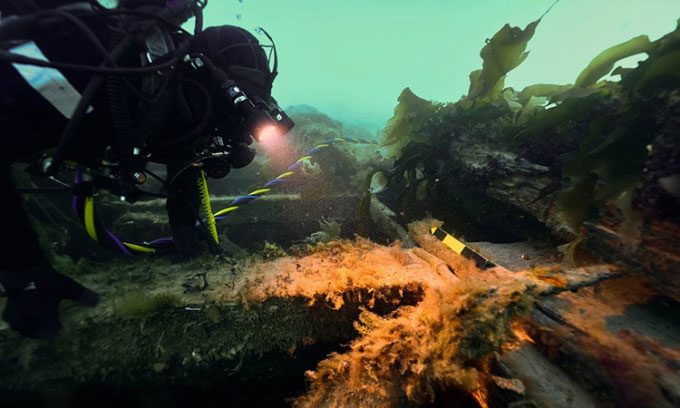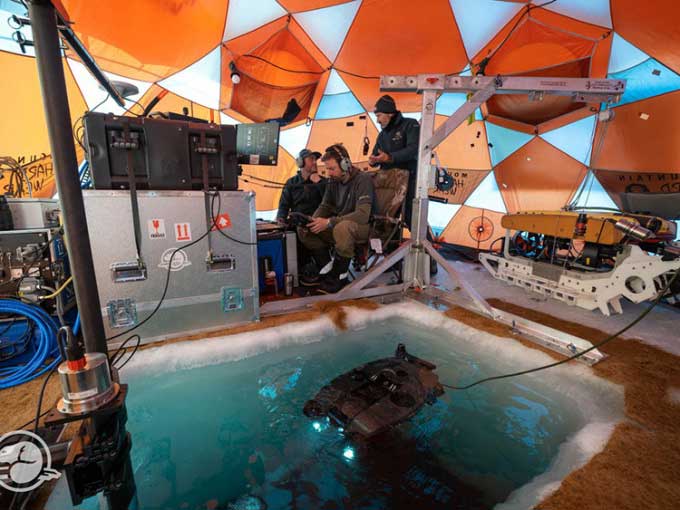With 56 dives over more than 11 days, experts recovered 275 artifacts from HMS Erebus, the ship that mysteriously sank in the 19th century.

An archaeologist examines the wreck of HMS Erebus. (Photo: Marc-André Bernier/National Parks Canada).
In May 1845, two ships under the command of John Franklin set sail from England to search for the Northwest Passage between the Atlantic and Pacific Oceans. However, during this perilous journey, Franklin and his crew of 128 mysteriously disappeared. It wasn’t until 2014 that Canadian archaeologists discovered the wreck of one of the ships, HMS Erebus, in the icy waters near King William Island in Nunavut, Canada’s northern territory. They found the remains of the other ship, HMS Terror, nearby in 2016.
The COVID-19 pandemic delayed explorations of the wreck, but archaeologists eventually returned to the area. They brought up a total of 275 artifacts from the Erebus in 2022, as reported by Smithsonian on January 6.
With 56 dives over more than 11 days, the team of archaeologists from Parks Canada recovered a carved leather sheet, eyeglasses, epaulettes, bowls, drawing and measuring tools, and many other items. The experts are currently studying and preserving the artifacts at Parks Canada’s laboratory in Ottawa.

Archaeologists using the Deep Trekker remotely operated vehicle to study the wreck of HMS Erebus. (Photo: Aimie Néron/National Parks Canada)
Since the discovery of both wrecks, archaeologists have focused more on HMS Erebus — the ship that is more vulnerable to damage. HMS Terror lies deeper underwater and appears to be safer.
After the pandemic, in April and May of last year, the team of experts returned to the site of the Erebus wreck. They set up camp above, inspecting and gathering data about the ship using the Deep Trekker remotely operated vehicle. In September, the archaeologists returned with the research vessel RV David Thompson and the support barge Qiniqtirjuaq. During this mission, they were able to dive underwater for up to two hours thanks to diving suits heated with hot water.
The team also noted physical changes to the wreck compared to two years earlier, likely caused by storms. Authorities suspect that climate change may lead to reduced ice cover and increased wave action, accelerating the degradation of the wreck.
“Sinking in one of the planet’s most unique and sensitive marine environments, the wrecks of HMS Erebus and HMS Terror are also among the best-preserved wooden shipwrecks in the world. Ongoing archaeological research at the site continues to enhance our understanding of the impacts of climate change on the area, helping us to conserve and protect irreplaceable cultural and natural heritage,” said Steven Guilbeault, Canada’s Minister of Environment and Climate Change.


















































